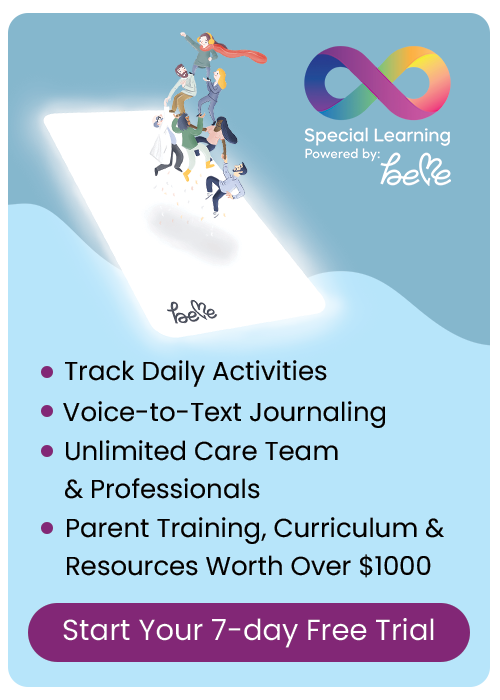Blog Categories
- ADHD
- Applied Behavior Analysis
- Autism Awareness
- Autism Service Providers
- Case Studies
- Dignosis
- Classroom Management
- Credentials
- Ethics
- Family Matters
- FAQs About LIVE Events
- Financial Planning
- Holiday Planning
- IEP's
- Panelists
- Private Equity in Autism & ABA Industry
- Psychopharmacology
- Sensory Processing Disorder
- Speech and Communication
- Subject Matter Experts
- Summer Planning
- Transition Planning
Safety Skills: Why They are Important and Ideas About How to Teach Them
Expert Name: Cindy Ring, MSW, LSW
Expert Title: MSW, LSW
Company Name: Step By Step Inc.
Company URL: www.stepbystepacademy.org
Short Bio: Cindy is a clinical administrative associate with Step By Step Inc.
Her responsibilities include designing research studies, protocols and evaluation tools, data collection and analysis and writing and editing grants and reports. Cindy is a member of the National Psychology Honor Society and a licensed social worker. She holds an MSW in Social Work Administration from Ohio State University, a BS in Psychology from Wright State University and is currently pursuing a PhD in Forensic Psychology from Walden University.
Safety Skills: Why They are Important and Ideas About How to Teach Them
One of the most important things you can teach your child or teen with autism is safety skills. Learning safety skills is important because:
• It reduces the chance of exploitation
• It reduces the possibility of injury
• It reduces the likelihood that minor injuries will become more of a problem
• It allows the child/teen to be more independent and self-sufficient
• It empowers children and teens
• It puts parents and guardians minds at ease
How do I teach these skills?
This is a huge topic that could never be addressed properly in a single document, so I will touch on some ideas about how to teach these skills by topic:
Sexual Safety. This is a huge one! Unfortunately, people with disabilities are a high risk group for exploitation. First, consider your child or teen’s cognitive level. Start where your child is at cognitively. A good place to start is teaching about strangers. Create some cards with familiar people and some unfamiliar people- teach the child/teen that the unfamiliar people are strangers and they have to be careful around these types of people. Create rule or reminder cards about not to talk to or take anything from strangers. Also help your child or teen understand what to do if someone is touching them in a way that makes them uncomfortable or if they see a person behaving in a way that makes them nervous. Social stories and reminder cards can be used for this. Video modeling is also a good tool to teach about this. You can create these at home by role playing scenarios and what to do in these scenarios. For children/teens who aren’t as cognitively challenged role play with them strategies to keep them safe. Remember knowledge is power! Don’t assume that your child or teen will not need this knowledge, even if family and service providers are with them all the time.
First Aid Safety. Teach your child/teen basic first aid techniques. Some good skills to teach are: how to put on a band-aid, how to wash out a cut, how toput ice or heat on a muscle injury, how to tell someone if he or she is hurt or in pain, how to care for a minor burn, and how to care for an insect bite or sting. Modeling, video modeling, and repetition are good teaching tools for these skills.
General Safety. Work with your child/teen on learning how to cross the street safely (looking both ways, reading the walk/don’t walk signals, crossing at the crosswalks, etc. are all good skills), how and when to call 911 (create flashcards with different scenarios and have your child or teen say of the situation is an emergency and needs a 911 call or not), what kinds of things to remember to say when calling 911, teach your child/teen his or her address and phone number and at least one emergency contact’s name and number and create reminder cards that he or she can carry with him or her. Other safety skills you can teach are: not to open the door when someone knocks, to stay away from dark, isolated places, to be careful and ask the owner before touching pets, not to touch stray pets or other animals, to be careful around the stove and other hot items (including bathwater), and which people can help if the child/teen feels unsafe (a teacher, policeman, parent, etc.). Social stories and video modeling are excellent ways to concretely teach these skills. Always test the child or teen to see if he or she understands.
These are a lot of skills and concepts and it is impossible to know exactly what your child or teen will need to know, but the more you can prepare him or her to take care of him or herself, the less likely he or she will encounter an emergency situation with no way to handle it. There are many skills listed to teach and working on them a bit each day and breaking them down will make it seem less impossible to teach all of them. Remember, when teaching these skills, consider your child’s level of understanding and teach in the best way he or she learns, and frequently test the child’s knowledge. It’s difficult sometimes, but very worth it!
RECOMMENDED PRODUCTS
Getting Dressed Girl Visual Schedule
ABCs of Sensory Processing Disorder: Where Do I Start?





